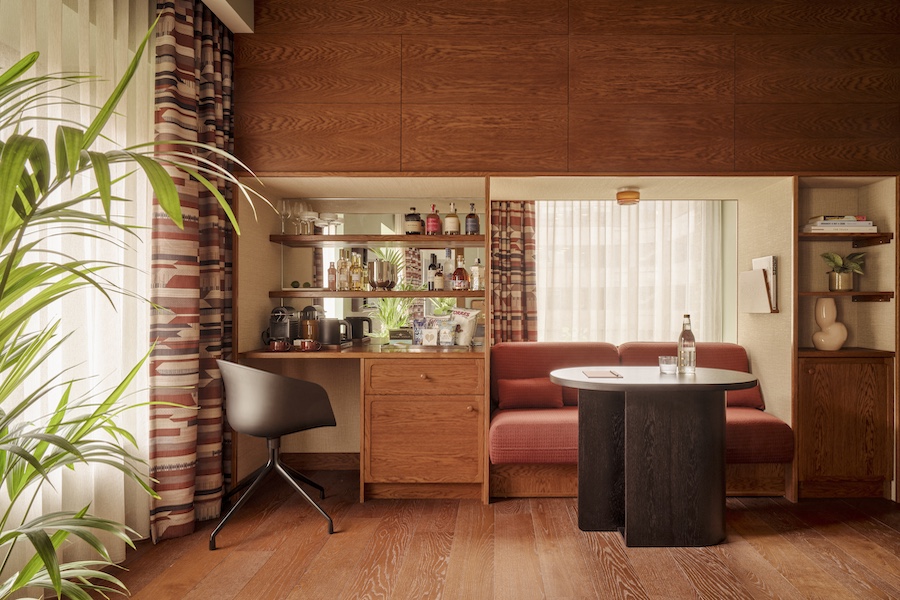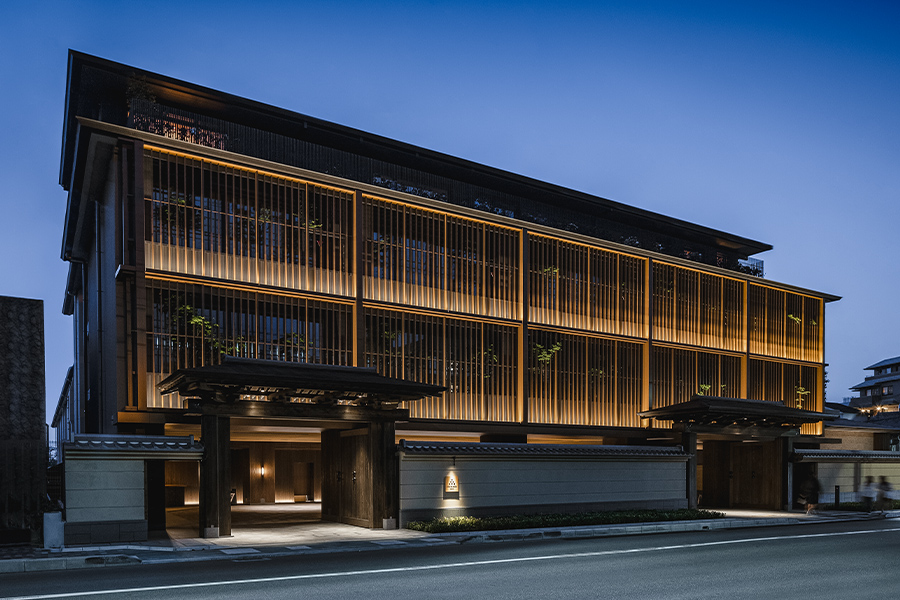This year, Few & Far will debut its first eco-lodge, Few & Far Luvhondo, an intimate, biophilic escape on the cliffs of South Africa’s Soutpansberg Mountains.
With just six cliffside suites surrounded by some of Southern Africa’s oldest and largest baobab trees, the boutique lodge, which features architecture from Plewman Architects and interiors by Ohkre Collective, is a gateway to the biologically rich UNESCO Vhembe Biosphere Reserve.
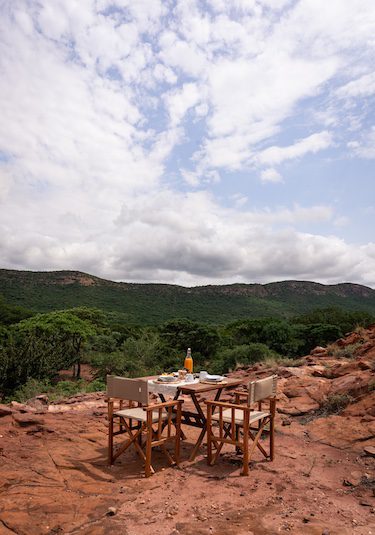 A carbon-neutral design
A carbon-neutral design
Few & Far Luvhondo exemplifies a fusion of sustainability and biophilic design, drawing inspiration from the natural landscape.
Interiors incorporate patterns and textures from regional rock formations, flora, and fauna, showcasing local craftsmanship through custom furnishings and artwork. The color palette draws on the clay-colored earth, citrine foliage, and vivid blue skies as well.
Powered by renewable energy and built with a zero-waste model, the lodge features materials such as heat-treated eucalyptus, sustainably sourced and produced at an onsite facility in collaboration with the company’s manufacturing arm Fyred to reduce its carbon footprint and support the local economy.
Conservation efforts at Few & Far Luvhondo
As a Verra Registered Carbon Project, the lodge contributes to large-scale rewilding efforts that will sequester more than 100,000 tons of carbon annually by restoring the mountain’s natural habitat.
Through the “conservationist for a day” program, guests can directly participate in these efforts—from clearing invasive plant species to monitoring the leopards that inhabit the region.
Few & Far Luvhondo also includes a wellness sanctuary complete with a meditative labyrinth walk and a range of spa treatments.
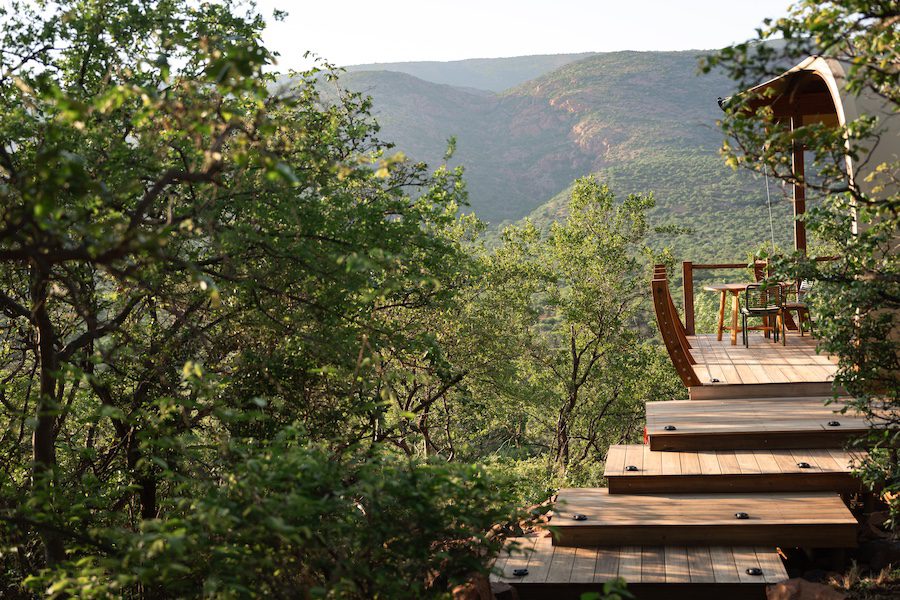
“In a post-pandemic world, luxury travel has evolved to encompass sustainability, authenticity, and a deeper purpose, and Few & Far Luvhondo represents a bold new approach to this, offering travelers opportunities to engage with local cultures and landscapes while leaving a positive impact,” says Few & Far cofounder Sarah Dusek.
“Unlike most operators, who focus solely on preserving existing conservation areas, we go further by actively enhancing the land’s ability to sequester carbon and by integrating active carbon management with habitat restoration, we’re not just protecting biodiversity—we’re regenerating it, ensuring a lasting impact on the environment and local communities,” Dusek adds.
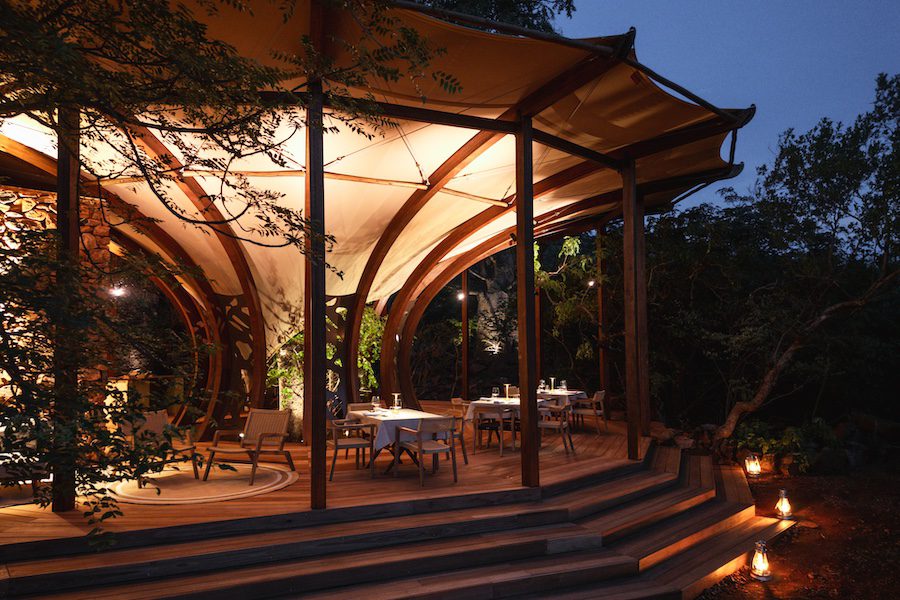
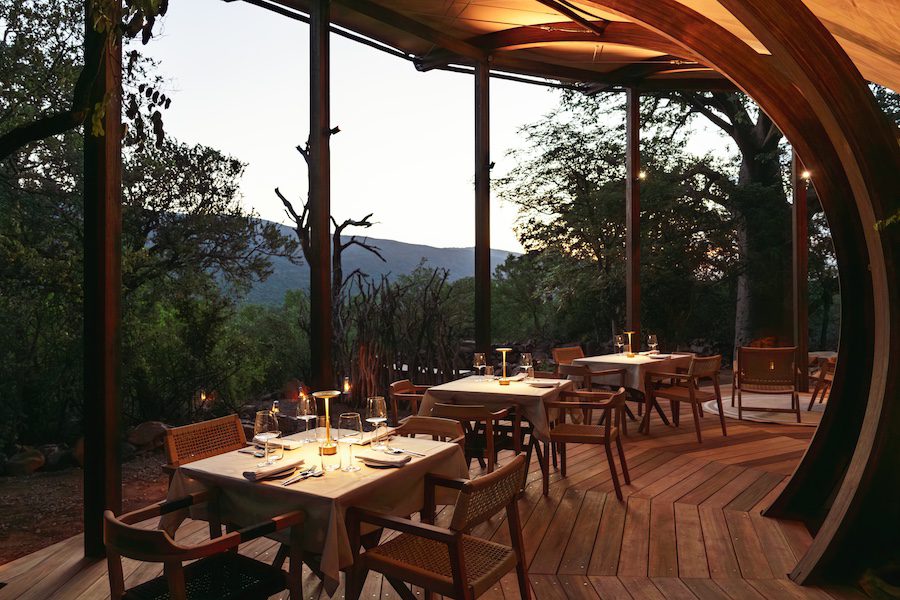
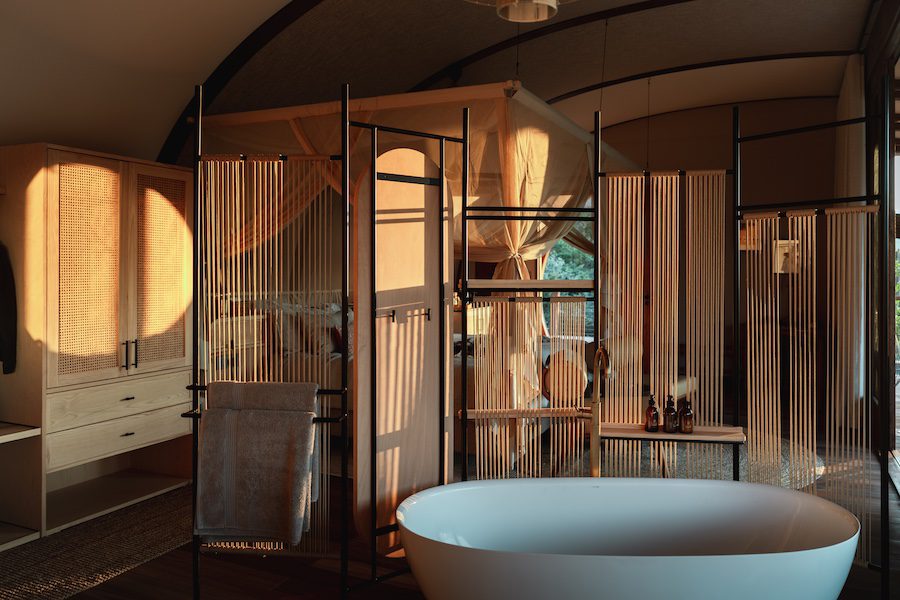
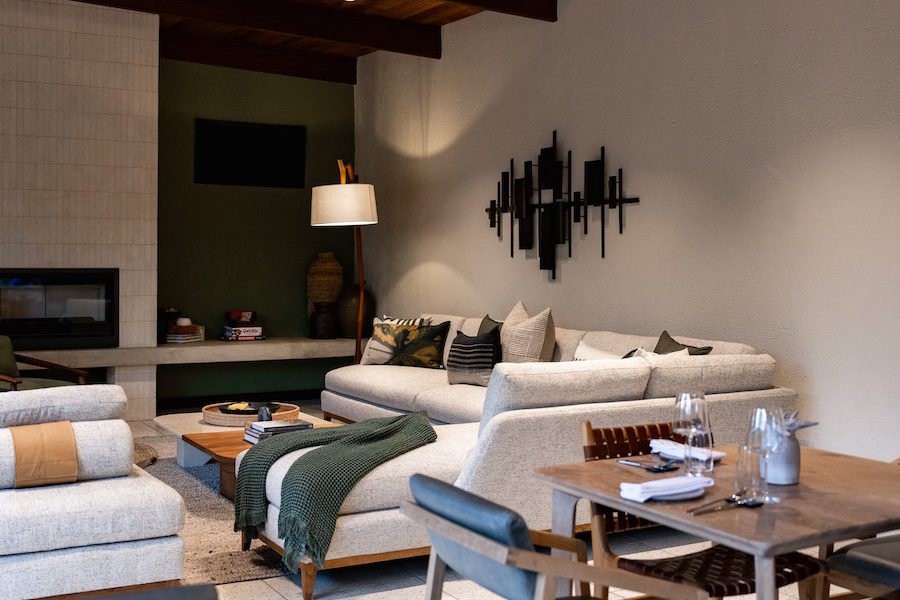
More from HD:
9 Trends That Will Shape the Hospitality Industry in 2025
Class Is in Session Inside This 18th-Century Barcelona Landmark
Filippo Arnaboldi Evolves Frette’s Storied Italian Craftsmanship


